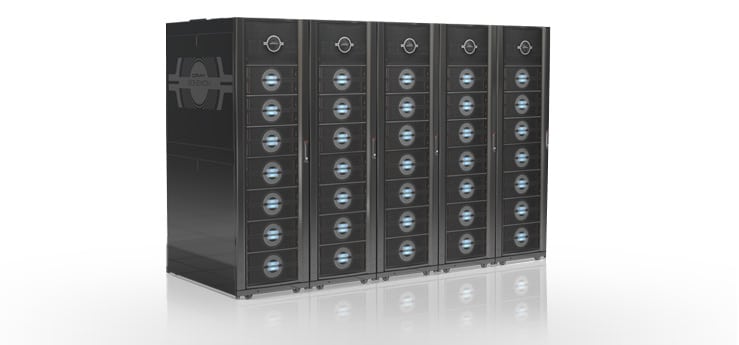Seagate has announced that four Cray customers will be among the first to implement Seagate’s latest high performance computing storage technology. The four Cray customers that will be using the new technology are comprised of the National Nuclear Security Administration (NNSA), Saudi Arabia-based King Abdullah University of Science and Technology (KAUST), Petroleum Geo-Services, and the U.K.’s Met Office, all of which who currently use the Cray Sonexion 2000 system.

Cray Sonexion 2000 is powered by Seagate and integrates all aspects of hardware, software, and support for the latest 2.5 version of the Lustre parallel file system. The Key benefits of Lustre 2.5 include a client metadata performance improvement of up to 700% and support for up to 16 billion files under a single file system. In addition, Lustre 2.5 allows for hierarchical storage management, which results in easy data transfer between storage types and 1TB/s performance.
NNSA
Lustre 2.5 will improve the agency’s Trinity supercomputer, which runs the largest and most demanding simulations of the United States’ nuclear stockpile across all three of the NNSA’s national laboratories. The Cray Sonexion 2000 system provides Trinity with the necessary storage and compute capabilities required for the simulations, helping to ensure the safety, security and effectiveness of the U.S. nuclear deterrent without the use of underground testing.
Petroleum Geo-Services
The marine geophysical company provides a broad range of seismic and reservoir services, such as acquisition, imaging, interpretation, and field evaluation. The PGS MultiClient data library is among the largest in the seismic industry with modern 3D coverage in all significant offshore hydrocarbon areas of the world. The new Cray XC40 supercomputer and Sonexion storage system will provide PGS with the advanced computational capabilities necessary to run highly complex seismic processing and imaging applications. Additionally, these applications include imaging algorithms for the PGS Triton survey, which is the most advanced seismic imaging survey ever conducted in the Gulf of Mexico.
KAUST
The public research university based in Saudi Arabia leverages the new system as part of its high performance computing and computational. With the Cray Sonexion 2000 system, Seagate indicates that KAUST will have a scalable platform with both the performance capabilities and useable capacity needed in order to support its large selection of research applications.
Met Office
The United Kingdom’s national weather service relies on supercomputers to aid in gathering and processing data for its weather and climate forecasts. The Cray Sonexion 2000 system provides the storage necessary for the Met Office’s operational weather prediction and climate research, which is comprised of 60 locations and includes more than 10 million daily weather observations used to create 3,000 forecasts and briefings.
To learn more about Cray and Seagate, customers can attend a webinar on April 23 at 10:00 am PT, which will explain some of the considerations when deploying Lustre.




 Amazon
Amazon